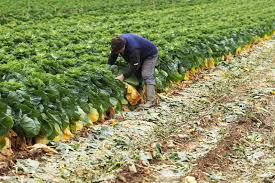Agricultural production faces numerous risks and uncertainties, and lending to such ventures inevitably leads to high transactional costs for financial institutions. This article examines the types of risks and strategies to reduce lending risks in agricultural lending.
Financial Transactional Costs

Agricultural lenders face high financial transactional costs when granting loans to small farmers due to the unique features of agricultural lending, which include:
i. Long distances to serve a dispersed rural clientele.
ii. Poorly developed transportation and communication infrastructures.
iii. Expensive management and supervision of rural branch networks.
iv. High additional costs for borrowers, such as opportunity costs (e.g., lost working time), transport costs, legal fees, and title fees.
For rural borrowers, financial transactional costs can also be high. Borrowers may have to pay multiple visits to the bank branch to conclude cumbersome loan application procedures, which take a long time to process.
They often spend time and money obtaining required documents and finding loan guarantors. For small loans, these costs can significantly increase the effective lending interest rate.
Dispersed Clients
Low population density and the dispersed location of rural clients make the provision of formal financial services costly. From the lender’s perspective, long distances between communities and inadequate rural transportation facilities in many developing countries increase the costs of loan appraisal, monitoring, and enforcement of loan repayment.
The use of mobile loan officers or branch offices can be effective in lowering transactional costs, but mobile facilities may be subject to high risks, such as possible attacks by armed robbers.
From the borrower’s perspective, the non-interest cost of acquiring formal loans can be substantial. For small borrowers, total borrowing costs may exceed normal interest payments.
These additional costs include transportation costs, legal and title fees, paperwork expenses, and time lost waiting in line. Borrower costs may also increase when formal loans are not disbursed quickly.
Read Also: Nine (9) Nutrient Requirements of Rabbits
Seasonality of Agricultural Production

The seasonality of agricultural production and the relatively long gestation period before crops are harvested and sold have direct implications for the financial transactional costs of lenders. Agricultural loans are typically larger and required for longer periods.
Aligning assets and liabilities is also more difficult in farming than in non-farming activities. Agricultural credit is often repaid in “lumpy” installments, involving one or two repayments rather than regular monthly installments, which is more common in microcredit.
This irregular pattern makes it harder for lenders to monitor repayment capacity and willingness. Furthermore, the uneven distribution of agricultural lending operations throughout the year increases fixed costs for personnel, and earnings from lending may not be sufficient to cover these costs.
Heterogeneity of Farming
The diversity in farm and non-farm income-generating activities of rural households requires better knowledge of the farm household’s financial situation. Loan officers typically have more information in urban lending cases than with rural farmers.
Investigating this information increases the time and costs for loan appraisal and may require setting individual loan repayment terms. This can also increase the costs of training agricultural loan officers.
Risks Associated with Agricultural Lending
There are two major types of risks associated with agricultural lending: those faced by financial institutions and those faced by small farmers.
Financial institutions face four major risks:
1. Credit or Loan Default Risk: This occurs when borrowers are unable or unwilling to repay the loan principal and service the interest charges.
2. Liquidity Risk: This arises when a bank cannot meet its cash requirements. Mismatching loan assets and liabilities exposes banks to high liquidity risks.
3. Interest Rate Risk: This happens when a loan loses value due to changes in interest rates or inflation. For example, a bank may issue a loan at 20% interest for five years, but inflation rises to 30% during that period.
4. Foreign Exchange Risk: This refers to exposure to changes in exchange rates, which can affect international borrowings designated in foreign currencies.
Risks Faced by Small Farmers
1. Production and Yield Risks: Yield uncertainty could be due to natural hazards which are usually referred to as impact of weather, pests and diseases or calamities on farm production. Risks severely impact younger, less well established, but more ambitious farmers.
For example, people that are mostly affected are those who embark on farming activities that may generate a high potential income at the price of concentrated risks. Subsequent loan defaults may adversely affect the credit worthiness of farmer borrowers and their ability to secure future loans.
2. Market and Price Risks: Price uncertainty due to market price fluctuation is particularly severe where information is lacking and when markets are imperfect. The relatively long period between the decision to plant a crop or to start a livestock enterprise and the realisation of farm output, means that market prices are unknown at the moment when a loan is granted.
This problem is even more acute for perennial tree crops like cocoa and coffee because of the gap of several years between planting and the first harvest.
3. Risk of Loan Collateral Limitation: Inadequate loan collateral poses specific problem to rural farmers. Land is the most widely accepted asset for use as collateral, because it is fixed and not easily destroyed.
It is also often prized by owners above its market value and it has a high scarcity value in densely populated areas. Small farmers with land that has limited value are less likely to have access to bank loans.
Also, movable assets, such as livestock and equipment, are regarded by lenders as higher risk forms of security. Therefore, the owner must provide proof of purchase and must have insurance coverage on these items. This is rarely the case for low-income small farmers.
There are a number of loan contract enforcement problems. For example, restriction on the transfer of land received through land reform programmes limits its value as collateral.
In most developing countries, the poor have difficulties in clearly demonstrating their legal ownership of land assets. Thus, they cannot use such land assets as collaterals.
4. Risks from Changes in Domestic and International Policies: Policy changes and state interventions can have a damaging impact on both borrowers and lenders. Changes in policy can affect farmers’ productivity.
This can have serious effect on their income and demand for productive inputs such as fertilisers. If a change in government policy reduces public expenditure as an essential part of structural adjustment programmes, the employment of small farmers may be affected because land area that can be cultivated will be reduced.
Read Also: Principles of Feeding Rabbit and Feed Resources
Strategies to Reduce Costs and Manage Risks

1. Cost Reduction: Macro lenders face the problem of high costs that are associated with the granting of small loans. Loan administrative costs do not vary by loan amount. That is, the administrative cost of granting N500.00 loan may be the same as that of granting N500,000.00 loan. Thus, small loans are less profitable for lenders.
For this reason, many formal financial institutions cannot open too many branches. This is so because setting up and operating branches is very costly and the profit generated may not be able to cover the operating costs. Various strategies of reducing costs are presented below:
2. Standardisation of Loan Products and Lending Procedure: Micro lenders simplify their operations by offering only a few highly standardised loan products. They usually provide short-term working capital loans and only occasionally, grant investment capital loan to established borrowers. Similarly, loans are kept small and are extended for only a few weeks or months, especially for first-time clients.
Borrowers with good loan repayment records are rewarded almost automatically with repeat loans. Some micro lenders increase the size of repeat loans by using pre-determined formulae. In addition, micro lenders usually charge small borrowers interest rates and fees that are much higher than those that are used by conventional formal lenders.
3. Productivity of Loan Officers: Loan officers are expected to serve a large number of clients. Up to 200 – 300 borrowers may be assigned per loan officer. In order to achieve this, staff performance bonuses are widely used.
These incentives are related to the loan volume handled, the quality of the loan and the number of low-income clients that are attended to. While these incentives increase the loan administration costs, well trained and motivated staff is essential to increase the overall productivity of the financial institution.
4. Group Lending: Proponents of group lending approach highlight the cost-reduction aspect of this methodology. There are two modalities of group lending. A micro lender may lend to a collective entity such as a co-operative or a village bank, which in turn on-lends the funds to its members. In both cases, group members are collectively responsible for the full and timely repayment of the loans.
Group lending can have the advantage of increasing the lenders outreach capacity by reducing the loan-administrative costs. In the first kind of group lending mentioned above, only one loan is administered for each group. In addition, group lending reduces the lender’s costs by maximising the use of insider information and by relying on peer borrower screening.
Do you have any questions, suggestions, or contributions? If so, please feel free to use the comment box below to share your thoughts. We also encourage you to kindly share this information with others who might benefit from it. Since we can’t reach everyone at once, we truly appreciate your help in spreading the word. Thank you so much for your support and for sharing!
Read Also: The Easiest Way to Fix Garbage Disposal Jam






